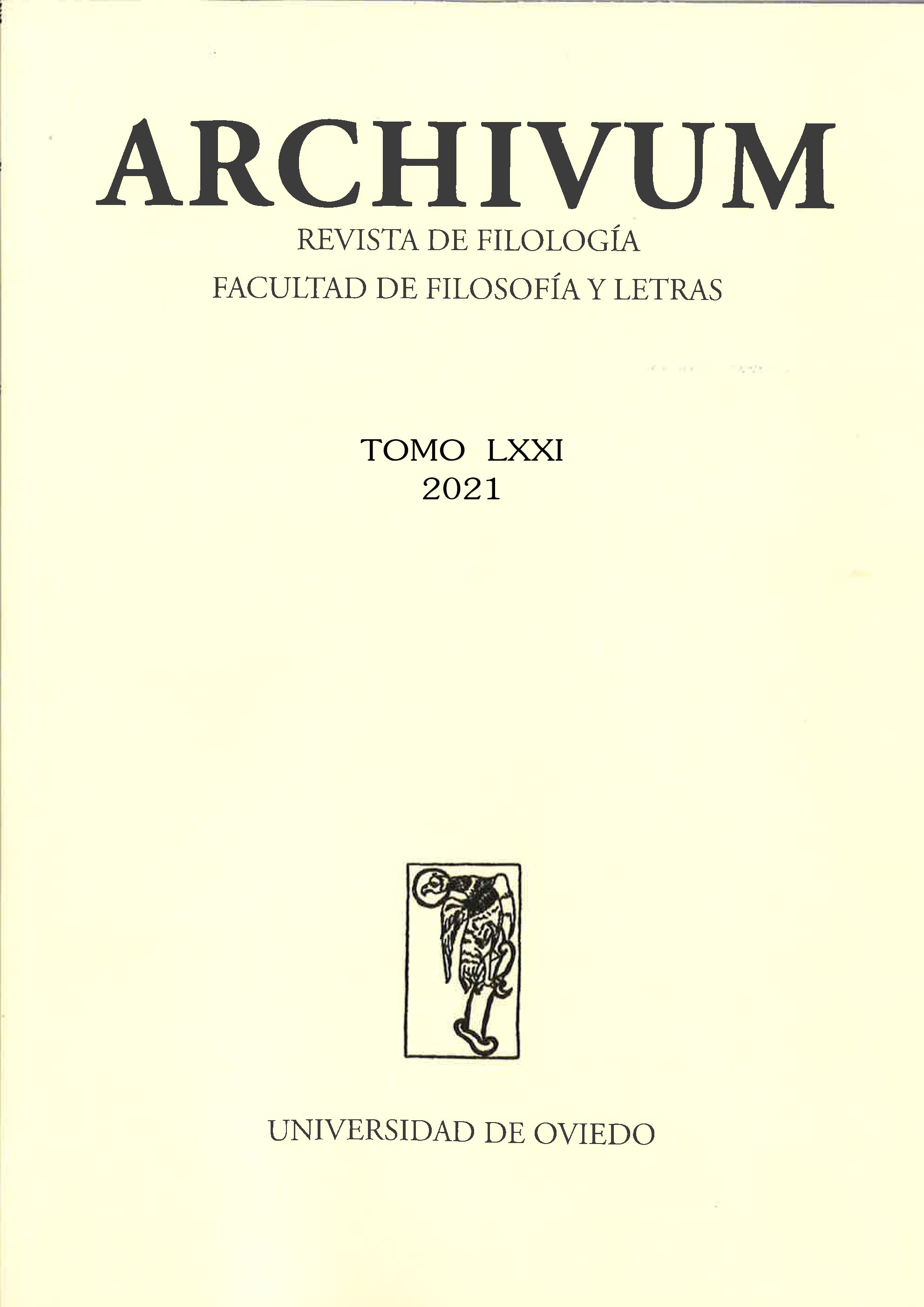Abstract
In the last generations, the Asturian language has suffered a constant loss of the characteristics that define it, especially due to an increasing process of castilianization. It is interesting to keep record and analyse this process of degradation. In this work, it is gathered the way of speaking of a ninety-year-old woman from El Mazucu (Llanes), studying its morphological, syntactical and phonetical characteristics. Through this interviewed manner of speech, some examples of this active process of hybridization will be evidenced. It will be highlighted the Asturian aspects that have been better preserved as well as other in-between forms which are suffering an alteration process because of the influence of the Spanish language, and even some Spanish forms which have substituted completely the original Asturian forms gathered in the area in previous studies. The result of the contact of the two languages is not only a mixture or hybridization of Asturian and Spanish, but a complex process which includes the emergence of in-between forms which is not exactly the Spanish in which it is moving towards but either the original Asturian.
References
ACADEMIA DE LA LLINGUA ASTURIANA (2015). Diccionariu de la Llingua Asturiana (DALLA). Consultado en http://www.academiadelallingua.com/diccionariu/
CANELLADA, Ma. Josefa (1944). El bable de Cabranes. Uviéu: Academia de la Llingua Asturiana.
CANO GONZÁLEZ, Ana María (2002). «Evolución lingüística interna del asturiano», en Informe sobre la llingua asturiana, Academia de la Llingua Asturiana: 27-56.
DIEGO LLACA, Francisco (1979). Asina jabla Llanes. Madrid: Artes Gráficas Minerva.
GARCÍA ARIAS, Xosé Lluis (1988). Contribución a la gramática histórica de la lengua asturiana y a la caracterización etimológica de su léxico. Serviciu de Publicaciones, Universidad d'Uviéu
GARCÍA ARIAS, Xosé Lluis (2003). Gramática Histórica de la Lengua Asturiana Uviéu, Academia de la Llingua Asturiana.
GARCÍA ARIAS, Xosé Lluis (2007). «De la dialeutoloxía a la llingua nel dominiu llingüísticu ástur». Lletres Asturianes 94, 7-26.
GARCÍA ARIAS, Xosé Lluis (2019). Diccionario General de la Lengua Asturiana (DGLA). [Consultáu en llinia: https://mas.lne.es/diccionario/ (última consulta 10/07/2020)]
GARCÍA GIL, Héctor (2002): «Aspeutos fónicos de la fala de Forniella. Estructura fonolóxica y caracterización». Lletres Asturianes 79, 25-42.
MARTÍNEZ FERNÁNDEZ, Rogelia (1997). Porruanos. So jabla y sos costumbres. A.C. “Llacín”.
SORDO SOTRES, Ramón (2001). Un vocabulario llanisco. Xixón: PRINTER-2.
SORDO SOTRES, Ramón (2017). Palabras de Caldueñu (Llanes). Edición del autor.
VALLINA ALONSO, Celestina (1985). El Habla del Sudeste de Parres (Desde el Sella hasta El Mampodre). Uviéu: GRÁFICAS OVIEDO, S. A.
VV.AA. (1979). Estudios y trabayos del seminariu de Llingua Asturiana II. Serviciu Publicaciones/ Univ. d'Uviéu.
VV.AA. (2003). Gramática de la Llingua Asturiana. Uviéu, Academia de la Llingua Asturiana.
VIEJO, Xulio (1993). «La llingua de los documentos del monesteriu de San Bartolomé de Nava (sieglos XIII-XIV)». Lletres Asturianes 47, 7-48.

This work is licensed under a Creative Commons Attribution-NonCommercial-NoDerivatives 4.0 International License.
Copyright (c) 2021 Archivum

